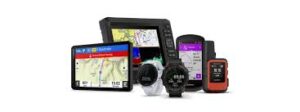
GPS 2.0 – What’s Coming After Navigation as We Know It
For decades, the Global Positioning System (GPS) has been our trusty guide, helping us navigate roads, track deliveries, and find the nearest coffee shop with just a few taps. But GPS as we know it is evolving rapidly. Welcome to GPS 2.0—a new generation of satellite navigation technology promising to revolutionize not only where we go, but how we interact with the world around us.
Let’s explore what GPS 2.0 means, how it works, and why it’s set to change everything from autonomous vehicles to augmented reality.
🚀 What Is GPS 2.0?
Traditional GPS relies on a network of satellites transmitting signals to your device, which calculates its exact position on Earth. GPS 2.0 builds on this foundation by integrating:
-
Enhanced accuracy: Down to centimeters instead of meters.
-
Better reliability: Stronger signals resistant to interference and jamming.
-
Real-time data: Faster updates and integration with other data sources.
-
Advanced features: Beyond navigation—enabling new applications like indoor positioning, augmented reality, and secure communications.
🎯 Why Do We Need GPS 2.0?
While GPS transformed navigation, it has limitations:
-
Accuracy issues: Standard GPS can be off by several meters, insufficient for self-driving cars or drone delivery.
-
Signal loss: Urban canyons and indoor environments often block GPS signals.
-
Vulnerability: GPS signals can be spoofed or jammed, posing security risks.
GPS 2.0 addresses these challenges to meet the needs of a connected, automated world.
🔍 Key Innovations in GPS 2.0
1. Multi-Frequency Signals
GPS 2.0 satellites broadcast on multiple frequencies, reducing errors caused by atmospheric interference and improving precision for critical applications like aviation and autonomous driving.
2. Integration with Other Systems
Next-gen GPS works alongside other global navigation satellite systems (GNSS) like Europe’s Galileo, Russia’s GLONASS, and China’s BeiDou, offering more satellites and better global coverage.
3. Augmented Positioning
Combining satellite signals with data from Wi-Fi, Bluetooth beacons, and inertial sensors enables accurate positioning even indoors or underground—places GPS struggled with before.
4. Quantum and AI Enhancements
Cutting-edge technologies like quantum clocks improve satellite timing accuracy, while AI algorithms analyze positioning data to predict and correct errors instantly.
🌐 Applications Beyond Navigation
GPS 2.0’s enhanced capabilities open doors to exciting new uses:
-
Autonomous Vehicles: Centimeter-level accuracy is essential for safe self-driving cars to navigate complex environments.
-
Augmented Reality (AR): Precise location data allows AR devices to overlay digital information perfectly aligned with the real world.
-
Smart Cities: Real-time tracking improves traffic flow, emergency response, and public transportation systems.
-
Agriculture: Precision farming benefits from accurate location data to optimize planting, irrigation, and harvesting.
-
Military and Security: Improved anti-jamming and encrypted signals bolster defense operations.
⚠️ Challenges to Overcome
Despite its promise, GPS 2.0 faces hurdles:
-
Cost and infrastructure: Upgrading satellite constellations and ground stations requires significant investment.
-
Privacy concerns: Enhanced tracking could raise surveillance and data security issues.
-
International coordination: Seamless global coverage depends on cooperation between multiple countries and systems.
🔮 The Future Is Now
GPS 2.0 is already rolling out. The latest satellites launched by the U.S. Air Force, Europe, and China incorporate many of these next-gen features. Consumer devices are beginning to support multi-frequency GNSS reception, bringing unprecedented accuracy to smartphones and wearables.
The convergence of GPS 2.0 with AI, 5G networks, and edge computing will soon make location-based services smarter, faster, and more integrated into daily life than ever before.
🧠 Final Thought
GPS 2.0 is not just about finding your way anymore—it’s about transforming how we experience and interact with the world. From safer roads to immersive digital environments, this next wave of positioning technology will redefine the boundaries of navigation and beyond.
As GPS 2.0 becomes the new standard, prepare for a world where your location is known with pinpoint accuracy, and the possibilities for innovation are limitless.